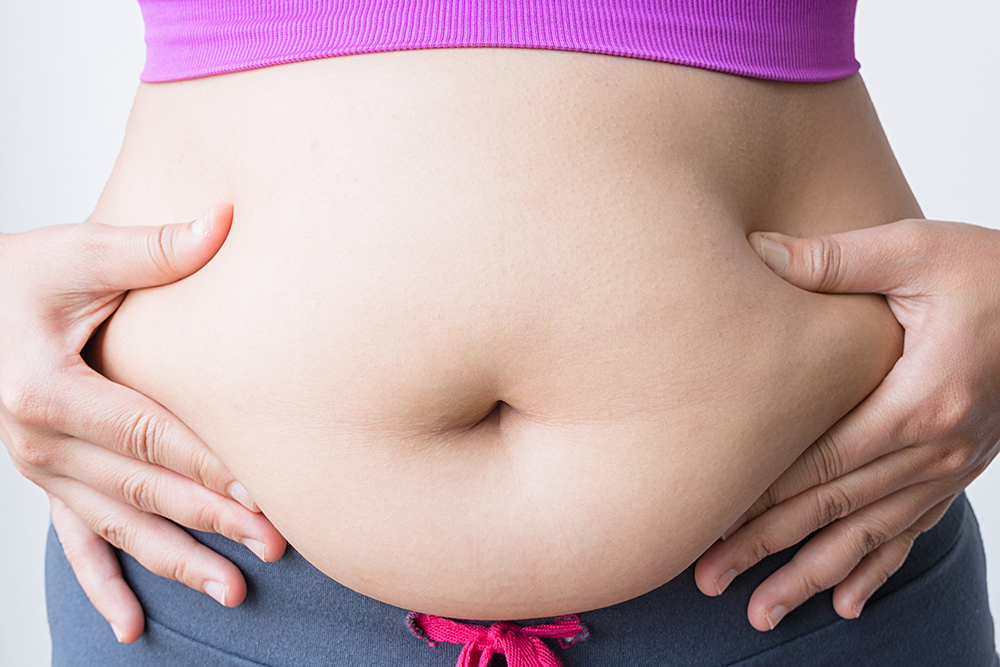Weight Loss – How Stress and Cortisol Affect Weight Loss

Do you struggle with extra fat around your midsection? Excess abdominal fat is not only visually unappealing to some, but it increases your heart disease risk.
What causes abdominal obesity?
There are many different reasons your body likes to store fat in the abdomen. I want to discuss one possibility – cortisol.Cortisol is a hormone made by the adrenal glands in the kidney. Cortisol levels are highest in the morning. Through gluconeogeneis (term for glucose production), cortisol breaks down muscle to provide the body with needed glucose for energy needs. Cortisol also relocates fat cell deposits into the visceral cavities of the abdomen.
When we are confronted with stress our body’s initial response is “fight or flight”. When we go into “fight” mode our body releases the hormone norepinephrine. When we respond with “flight” (or anxiety) our body releases epinephrine. If the stressful situation is long term and you begin to feel distressed and defeated, the hypothalamus in the brain becomes involved, eventually leading to the release of cortisol from the adrenal gland in the kidney.
Why is “fight or flight” important to understand?
Your perception of an event can determine your body’s physical response. Do you feel stressed, but challenged by an obstacle or do you feel overwhelmed and out of control? If you feel challenged and “fight” your body responds with an accelerated heart rate that increases the release of fatty acids into circulation. If you feel out of control and defeated (“flight”), the body increases fat formation (lipogenesis), breakdowns tissue (muscle), suppresses the immune system, and increases visceral fat deposits.
What is visceral fat?
Visceral fat is the fat around and between your organs. Subcutaneous fat is the fat layer beneath your skin.
Excess visceral fat leads to the “beer belly” effect (also referred to as the “apple” shape). Visceral fat is connected to insulin resistance and glucose intolerance (linked to diabetes), high cholesterol, high blood pressure, and heart disease.
Are you at risk?
Get out a tape measure.
Wrap the tape measure around your abdomen at the level of your navel (belly button). Make sure the tape measure is level all the way around (you may need extra hands). Resist the temptation to cinch in the tape measure for a lower number, instead hold the tape measure lightly against your skin.
Men – A waist measurement of 40 inches (102 cm) or greater equal’s abdominal obesity.
Women – A waist measurement of 35 inches (88 cm) or greater equal’s abdominal obesity.
How to reduce stress for minimal impact on abdominal fat and heart disease risk?
Stress is a part of living, but you can take steps to reduce your stress levels.
Physical activity, especially aerobic activity, is a great stress management tool. Activity releases the “feel good” hormone serotonin to help combat the negative effects of long term stress. As an added bonus, you burn calories to shed the extra layer of fat.
p>Additional interventions to reduce stress include deep breathing, progressive relaxation, meditation, and visualization. Don’t be afraid to step out of your comfort zone and try something new that may be effective at reducing your stress levels. Getting enough sleep and making healthy food choices are two additional steps to promote stress management.
Be sure to get a copy of the special report Stop Wasting Money – Take Control of Your Health to start on the path to heart health and weight loss!



